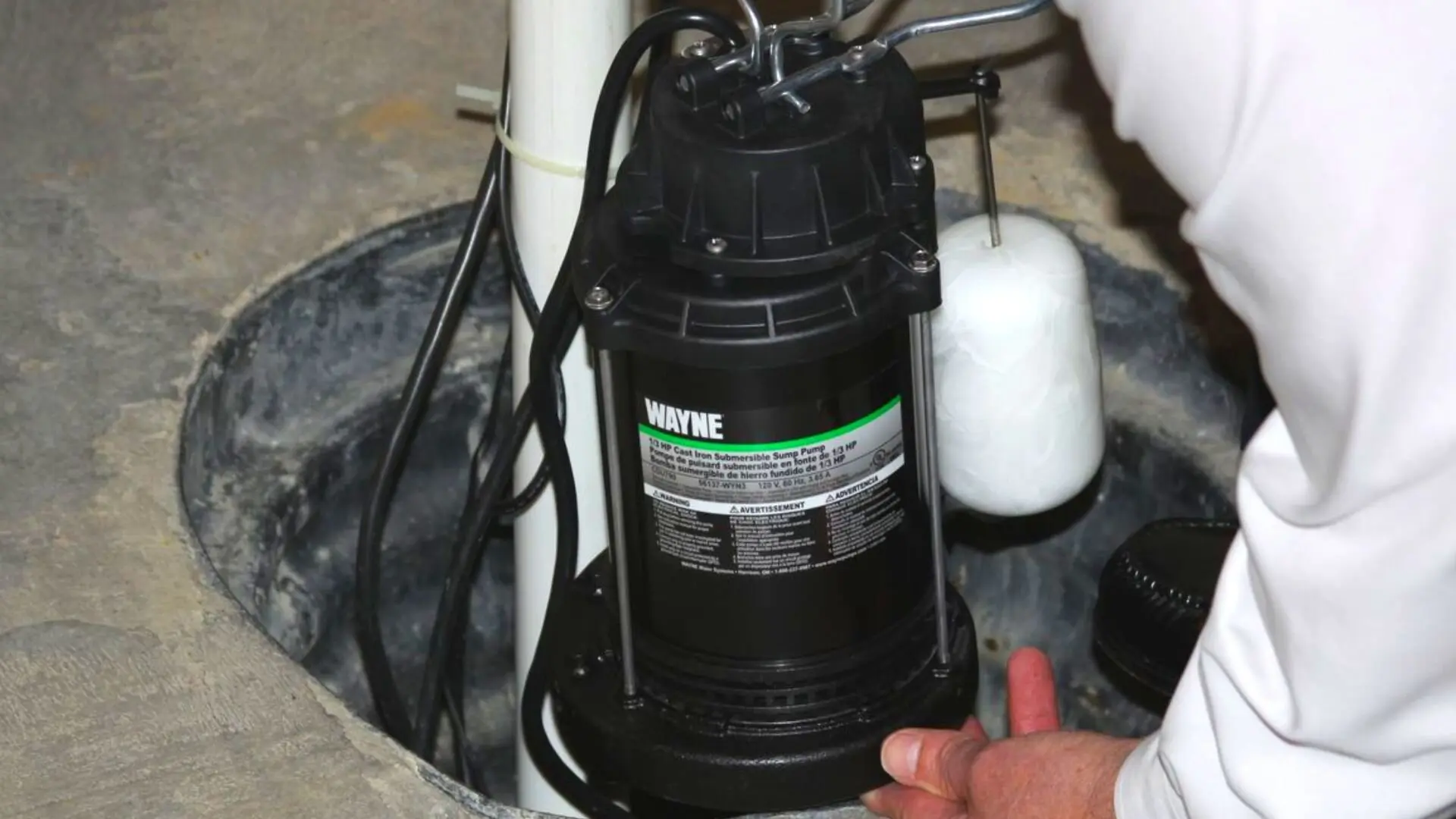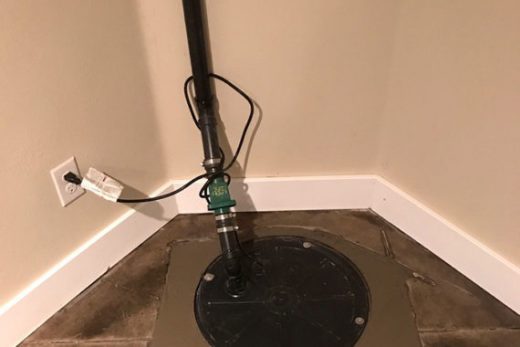My Comprehensive Guide to Cleaning a Sump Pump
My Comprehensive Guide to Cleaning a Sump Pump
Blog Article
The author is making a number of good pointers regarding Keep Your Sump Pump Clean, It'll Keep You Dry overall in this post which follows.

Sump pumps are important parts in several homes, specifically in locations prone to flooding or too much dampness. They aid protect against water damage by effectively getting rid of excess water from cellars or crawl spaces. However, like any other appliance, sump pumps require normal maintenance to ensure they operate successfully when required the most. Cleansing your sump pump is a crucial part of its upkeep, and understanding just how to do it effectively can save you from costly fixings and prospective calamities.
Introduction
Maintaining a clean sump pump is essential for its appropriate functioning and long life. Disregarding this crucial job can lead to clogs, breakdowns, and ultimately, water damages to your building. As a result, learning exactly how to clean up a sump pump is vital for house owners who rely on these tools to keep their cellars dry and protected.
Signs of a Dirty Sump Pump
Knowing when your sump pump needs cleansing is crucial for stopping prospective malfunctions. Some usual indicators that show a filthy sump pump include unusual sounds during procedure, lowered water flow, and visible debris in the pit. If you observe any of these signs and symptoms, it's necessary to cleanse your sump pump immediately to prevent any further problems.
Preparing for Cleaning
Prior to you begin cleansing your sump pump, it's essential to take some security precautions. Beginning by shutting off the power to the pump to prevent any kind of electric accidents. Additionally, put on proper protective equipment, such as handwear covers and safety glasses, to secure yourself from dust, particles, and potential microorganisms.
Comprehending the Sump Pump
Before diving right into the cleaning procedure, it's important to have a fundamental understanding of how a sump pump works. Commonly mounted in a pit or basin listed below the basement floor, a sump pump contains numerous key components, including a pump, a float button, and a discharge pipe. When water builds up in the pit, the float button triggers the pump, which then pumps the water out through the discharge pipeline, away from the structure's structure.
Detailed Overview to Cleaning a Sump Pump
Shutting down the Power
Begin by separating the power supply to the sump pump to stop any kind of mishaps while cleansing.
Looking For Correct Performance
Prior to reinstalling the pump, execute a fast examination to guarantee that the float button activates the pump appropriately. Put some water into the sump pit and observe the pump's operation. If everything is operating appropriately, you can rebuild the pump and reconnect the power supply.
Eliminating Debris and Dirt
Make use of a pail or a scoop to remove any visible particles, dirt, or sediment from the sump pit. Dispose of the particles correctly to prevent it from blocking the pump or the discharge pipeline.
Cleansing the Pump and Drift Switch Over
Once the pit is clear of debris, meticulously get rid of the pump from the pit. Inspect the pump and the float switch for any type of indications of damage or wear. Use a soft brush or towel to clean up the surface areas and eliminate any collected gunk.
Flushing the System
After cleaning the pump and float button, purge the sump pit with clean water to remove any kind of continuing to be dust or debris. This will help make certain that the pump operates smoothly and effectively.
Upkeep Tips to Keep Your Sump Pump Clean
Along with regular cleaning, there are several maintenance suggestions you can follow to maintain your sump pump in optimal problem:
Conclusion
Cleaning your sump pump is a critical facet of its maintenance and ensures that it runs successfully when you need it one of the most. By adhering to the actions described in this guide and integrating routine maintenance right into your regimen, you can extend the lifespan of your sump pump and secure your home from water damage.
6 STEPS ON HOW TO CLEAN A SUMP PUMP PROPERLY
UNDERSTANDING SUMP PUMPS
Your sump pump plays a crucial role in protecting your home by managing and removing excess water. It primarily functions as a “shield”, guarding your basement against the damaging effects of water accumulation. The pump is housed in a sump pit in the lowest part of your basement, and its job is to pump out any water that collects there.
During heavy rainfalls or when snow melts rapidly, water can infiltrate your basement, posing potential risks like flooding, structural damage, and harmful mold growth. Here, the sump pump springs into action, pumping out the intruding water and directing it away from your home.
SAFETY FIRST
Before cleaning, remember to prioritize safety. Disconnect the sump pump from the power source to prevent any accidental electric shocks. Also, wear sturdy gloves to protect your hands from any sharp or dirty components within the pump.
REMOVE THE SUMP PUMP
After ensuring your safety, the next step is to remove the sump pump from its pit. Doing this might require careful maneuvering as you don’t want to damage any pump components. Once removed, clean the sump pit to remove any accumulated debris or sludge.
INSPECT THE PUMP
Inspect the pump for any visible signs of wear or damage. Check the power cord, float switch, and impeller housing. If any components look worn out or damaged, consider replacing them to ensure optimal performance.
CLEAN THE PUMP
Thoroughly clean the pump with warm, soapy water. Make sure to rid it of any dirt, gravel, or other debris that might impede its performance. You can use a toothbrush to clean the small, hard-to-reach parts of the pump.
REINSTALL THE SUMP PUMP
Reinstall the pump into the sump pit Make sure it’s positioned correctly to remove the water effectively Once it’s back in place, reconnect it to the power source TEST THE PUMP
Finally, pour some water into the pit to ensure the pump works correctly. It should start automatically and begin pumping out the water; if it doesn’t, check the power source and the positioning of the pump.
Remember, while cleaning your sump pump is an essential part of home maintenance, hiring a professional plumber for a thorough inspection and cleaning at least once a year is also important. This will ensure that your pump is in optimal condition, ready to protect your home from potential water damage.
BEST PRACTICES FOR CLEANING SUMP PUMP DISCHARGE PIPES
Regular Inspection: Regularly inspect your discharge pipes, especially during heavy rainfall or snowmelt periods. Look for any signs of blockage or damage. Early detection of problems can prevent serious issues down the line. Periodic Cleaning: Over time, sediment and debris can accumulate in the discharge pipes, impeding the flow of water. Regular cleaning helps keep the pipes clear and functioning efficiently. You can use a high-pressure water jet to effectively clean the pipes. Insulation During Winter: In colder climates, discharge pipes can freeze, blocking the outflow of water. Protect your discharge pipes from freezing temperatures by insulating them with foam pipe insulation. This will ensure the sump pump can continue to discharge water even in freezing conditions. Proper Positioning: The discharge pipe should be positioned to direct water away from your home’s foundation. Improper positioning can lead to water seeping back into the basement. Ensure the pipe is long enough and angled correctly. Installation of a Check Valve: A check valve prevents water from flowing back into your sump pit after the pump has pushed it out. Installing a check valve helps maintain the efficiency of your sump pump and reduces the risk of flooding. Minimize Pipe Turns: Every curve or turn in the discharge pipe can decrease the efficiency of water flow. By minimizing turns and bends in your discharge pipe, you can increase the efficiency of your sump pump. https://www.fullspeedplumbing.com/how-to-clean-a-sump-pump-properly9999/

As a person who reads about Keep Your Sump Pump Clean, It'll Keep You Dry, I thought sharing that article was a great idea. If you appreciated our post please remember to pass it around. Thanks a lot for your time. Don't forget to check up our website back soon.
Click Here Report this page